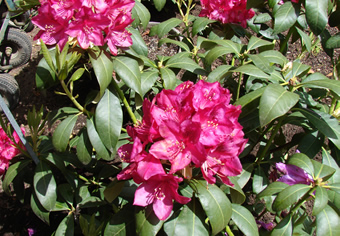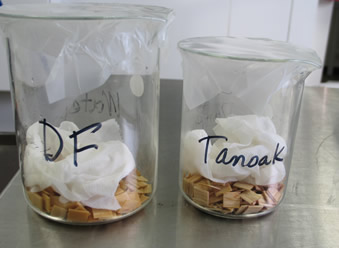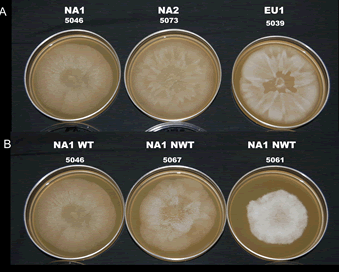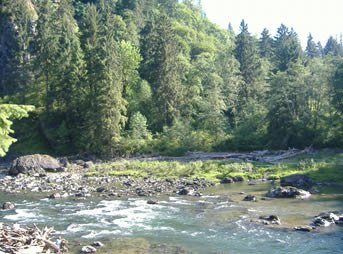Influence of Nitrogen Fertility
gary.maguireNursery research
Influence of Nitrogen Fertility on the Susceptibility of Rhododendrons to Phytophthora ramorum
Rita L. Hummel, Marianne Elliott, Gary Chastagner, Robert E. Riley, Kathy Riley, and Annie DeBauw, Washington State University, Puyallup Research and Extension Center, 2606 W. Pioneer, Puyallup, WA 98371; klriley@wsu.edu
Research information demonstrating the effects of various cultural practices on host susceptibility to Phytophthora ramorum is generally lacking and thus limits the development of an integrated approach to managing diseases caused by this pathogen in irrigated nursery systems. Rhododendron spp. have accounted for about 78% of the plants associated with P. ramorum-positive nursery finds in Washington State. Nitrogen fertility levels have been reported to influence disease in some Phytophthora disease pathosystems, but data is not available for the P. ramorum-rhododendron pathosystem.
During 2008 we investigated the dynamics between nitrogen application rates and the susceptibility of ‘English Roseum’, ‘Cunningham’s White’ and ‘Compact P.J.M.’ to P. ramorum. One-gallon plants were potted into 3-gallon containers. The growing medium was 100% Douglas-fir bark with micromax incorporated at the rate of 1.75 lbs/yd3. Plants were placed on a gravel nursery bed and watered as needed with overhead sprinkler irrigation. Residual fertilizer in the media was depleted, then ammonium nitrate fertilizer at 100, 300 and 600 ppm N was applied in liquid form twice a week to each of eight plants per cultivar starting on June 2nd. The same rate of P (potassium phosphate) and K (potassium sulfate), 100 and 200 ppm, respectively, was applied at each fertilization. Commencing with fertilizer application, the plants were switched to a drip irrigation system. In early October, plant growth, visual quality and leaf color were measured. At the same time, fully mature, current season leaves from each plant were harvested for determination of leaf tissue nitrogen content and P. ramorum inoculations.
Six detached leaves from each plant were inoculated with suspensions of zoospores from an NA1 lineage rhododendron isolate of P. ramorum by pipetting a 10 ul drop of suspension onto the lower leaf surface. The leaf tissue beneath drops on three leaves was injured using an insect pin, while the tissue beneath each drop on the other leaves was left unwounded. The leaves were then incubated at 19-20 C.
As expected, shoot growth and plant quality indices increased with nitrogen fertility. Based on an overall analysis of lesion size after 10 days, there was a significant difference in the susceptibility of the three cultivars to P. ramorum. “Compact P.J.M.’ had the smallest lesions, while ‘English Roseum’ had the largest. Lesions developed on all the wounded and unwounded inoculation sites on the ‘English Roseum’ and lesion size increased with increasing nitrogen fertility. Nitrogen fertility had no effect on lesion size on the other two cultivars.
in
Proceedings of the Sudden Oak Death Fourth Science Symposium 2010
Susan J. Frankel, John T. Kliejunas, and Katharine M. Palmieri, tech. coords.
Gen. Tech. Rep. PSW-GTR-229. Albany, CA: U.S. Department of Agriculture, Forest Service, Pacific Southwest Research Station. 378 p
| Abstract pdf | Poster pdf |


